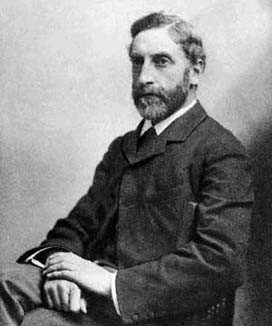John Hopkinson facts for kids
Quick facts for kids
John Hopkinson
|
|
|---|---|
 |
|
| Born | 27 July 1849 Manchester, England
|
| Died | 27 August 1898 (aged 49) Val d'Herens, Switzerland
|
| Nationality | British |
| Known for | Hopkinson effect Hopkinson's law Hopkinson's test Three-phase electric power |
| Awards | Royal Medal (1890) |
| Scientific career | |
| Fields | physics, electrical engineering |
John Hopkinson (born July 27, 1849 – died August 27, 1898) was a brilliant British physicist and electrical engineer. He was a member of the Royal Society and led the IEE (now called the IET) twice.
Hopkinson is famous for inventing the three-wire system. This system helps distribute electrical power more efficiently. He received a patent for this invention in 1882. He also studied electromagnetism and electrostatics. In 1890, he became a professor of electrical engineering at King's College London. He also directed the Siemens Laboratory there.
You might hear about Hopkinson's law. This law is about magnetism and is similar to Ohm's law for electricity. It is named after him because of his important work.
Contents
Who Was John Hopkinson?
John Hopkinson was born in Manchester, England. He was the oldest of five children. His father, also named John, was a mechanical engineer.
Early Life and Education
John went to Queenwood School in Hampshire. Later, he studied at Owens College in Manchester. In 1867, he earned a scholarship to Trinity College, Cambridge. He graduated in 1871 as a Senior Wrangler. This means he placed first in the very difficult Cambridge Mathematical Tripos exam. He also earned a BSc degree from the University of London.
Even though he could have stayed in academics, Hopkinson chose to work in engineering. He was also part of a special group called the Cambridge Apostles.
Starting His Engineering Career
Hopkinson first worked at his father's engineering company. In 1872, he became an engineering manager. He worked in the lighthouse department at Chance Brothers and Company in Smethwick.
In 1877, he became a Fellow of the Royal Society. This was because he used Maxwell's ideas about electromagnetism. He applied these ideas to solve problems with electrostatic capacity and residual charge.
What Were His Key Inventions?
In 1878, Hopkinson moved to London. He started working as a consulting engineer. He focused on making dynamos better and more efficient.
The Three-Wire System
Hopkinson's most important invention was his three-wire distribution system. He received a patent for it in 1882. This system made it possible to send electricity over longer distances with less power loss.
Connecting Dynamos
In 1883, Hopkinson showed something amazing using math. He proved that you could connect two alternating current dynamos side-by-side. This was a big problem for engineers before him.
He also studied how materials react to magnetism at high temperatures. He discovered something called the Hopkinson peak effect.
Electric Motor Control
Hopkinson also invented the series-parallel method for controlling electric motors. He received a British patent for this in 1881. This invention was very important for developing electric railways.
He tried to get a US patent in 1892. However, another inventor, Rudolph M. Hunter, already had a US patent for a similar method. The US Patent Office agreed that Hopkinson was the first inventor. But his British patent expired before the US case was finished. This meant he couldn't get a US patent.
Leadership and Legacy
John Hopkinson was the President of the Institution of Electrical Engineers twice. During his second term, he suggested that electrical engineers should help defend the country. In 1897, the Volunteer Corps of Electrical Engineers was created. Hopkinson became a major in charge of this group.
A Tragic End
On August 27, 1898, John Hopkinson and three of his six children died. They were in a mountaineering accident in the Pennine Alps in Switzerland. The accident happened on the Petite Dent de Veisivi mountain.
Remembering His Contributions
Many things were named in his honor:
- The 1899 extension to the Engineering Laboratory at the University of Cambridge was named after him. A plaque marks this on Free School Lane.
- The Hopkinson and Imperial Chemical Industries Professorship of Applied Thermodynamics is a special teaching position named after him.
- At the Victoria University of Manchester, the Electro-technical Laboratory (built in 1912) was named after him.
There is also a sundial memorial for his daughter Alice at Newnham College, Cambridge. The Lina Evelyn Hopkinson Scholarship helps students at Wimbledon High School who study English Literature.
His sons Bertram and Cecil, his wife Evelyn, and his daughter Ellen are buried in the Ascension Parish Burial Ground, Cambridge. The rest of his family is buried in Switzerland.
See also
- Electric motor
- Three-phase electric power
- Polyphase system
- Rigid collectors
- Bertram Hopkinson, his son
- Alfred Hopkinson and Edward Hopkinson, his younger brothers
- Austin Hopkinson, his nephew


